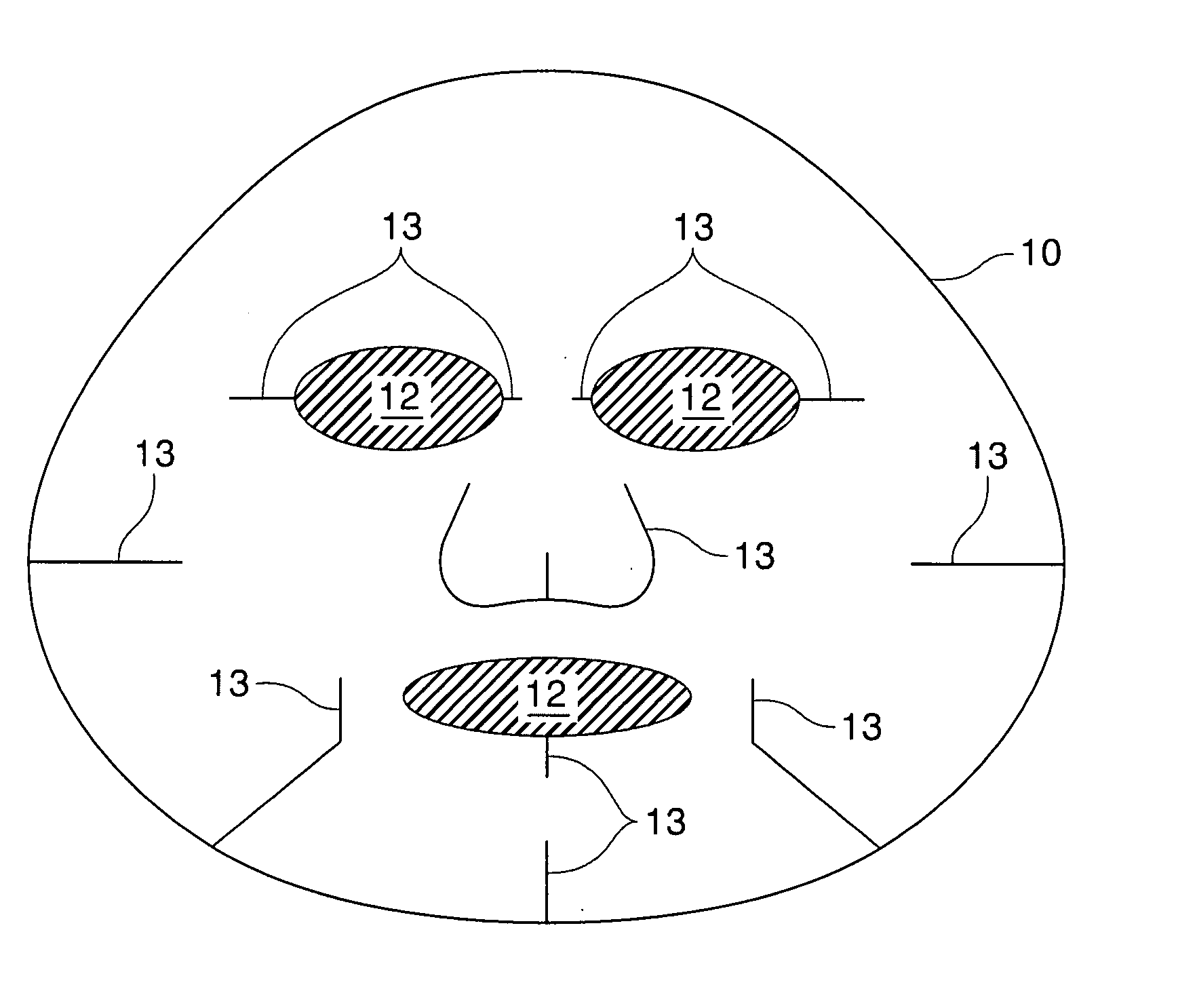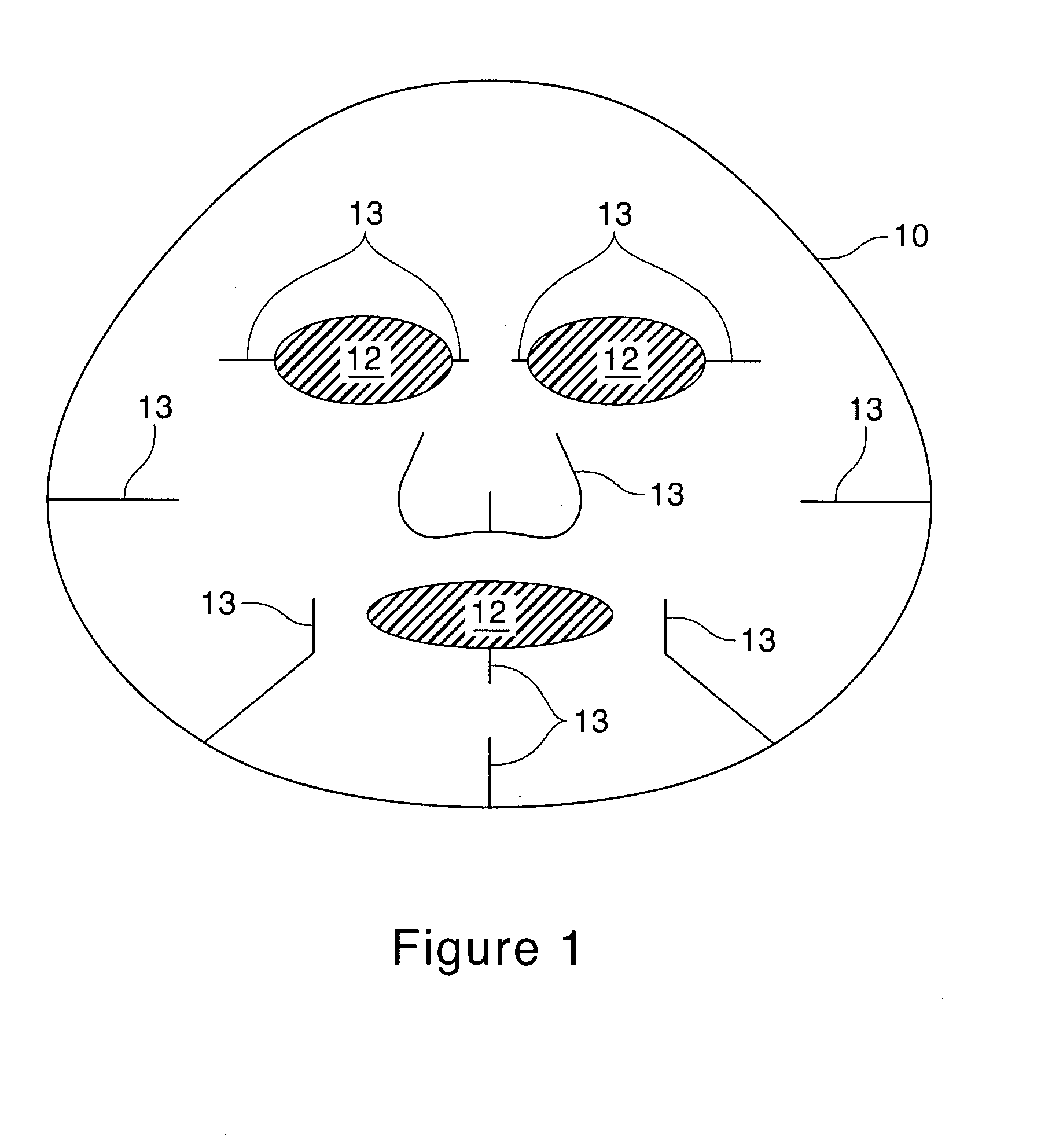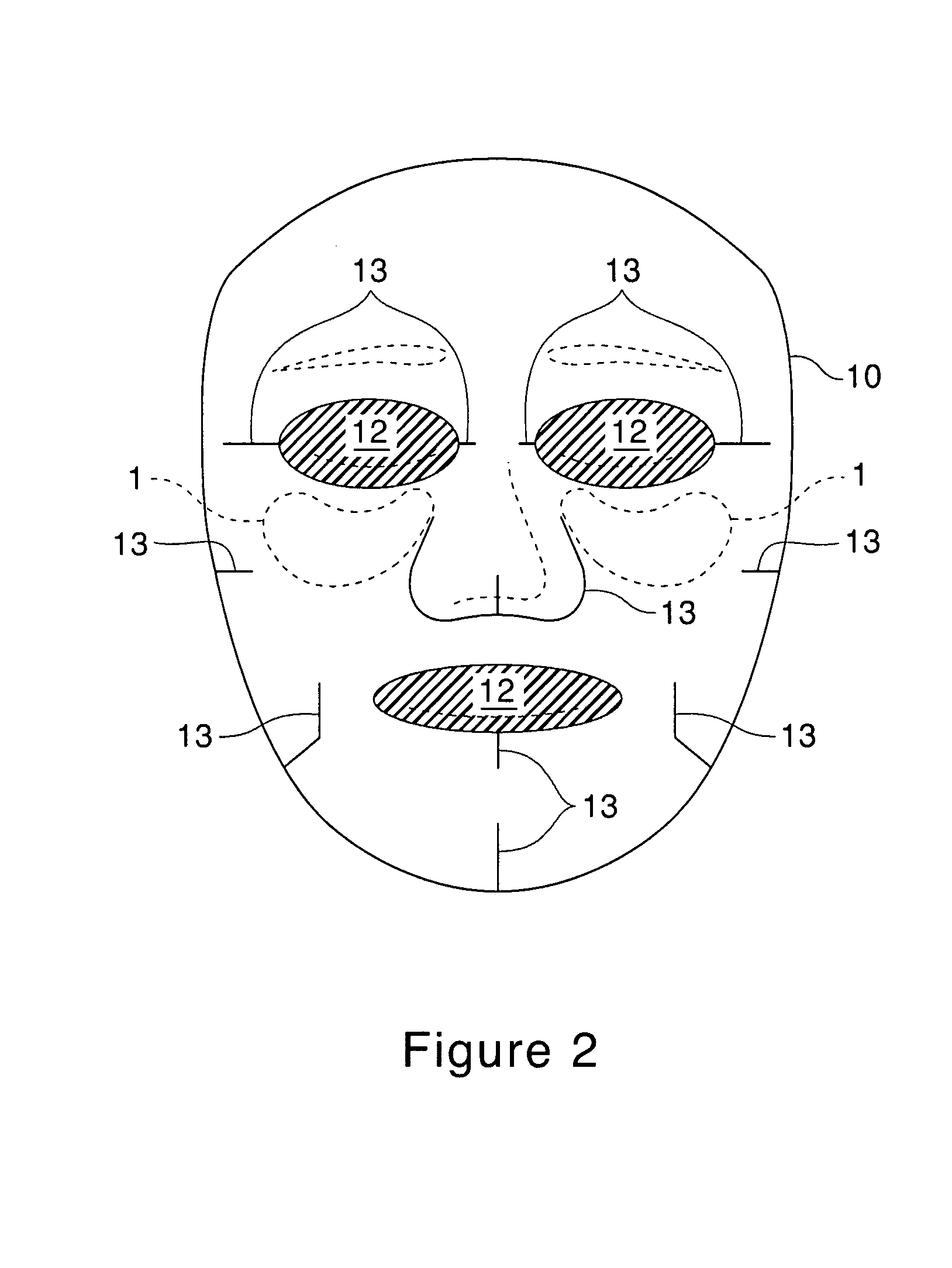Treatment articles capable of delivering intensive care and overall treatment simultaneously
- Summary
- Abstract
- Description
- Claims
- Application Information
AI Technical Summary
Benefits of technology
Problems solved by technology
Method used
Image
Examples
examples
[0102]The following examples further describe and demonstrate embodiments within the scope of the present invention. The examples are given solely for the purposes of illustration and are not to be construed as limitations of the present invention, as many variations are possible without departing from the spirit and scope of the inventions. Where applicable, ingredients are identified by chemical or CTFA name, or otherwise defined below.
examples 1-8
Water-Soluble Films Suitable for the First Substrate
[0103]Monolayer water-soluble films may be prepared according to Examples 1-4 and 8. The monolayer water-soluble film of Example 1 may be produced as follow:
Step 1: Water and glycerin are mixed homogeneously to obtain a mixture.
Step 2: Sodium alginate and waxy corn starch are added to the mixture of Step 1 to obtain a mixture and it is gelatinized by heating up to 80° C.
Step 3: The gelatinized mixture of Step 2 is cooled down to 40° C., and is cast onto a PET film, and is dried at 80° C.
[0104]The film of Example 2 may be produced by adding ascorbyl glucoside solution which is prepared by dissolving ascorbyl glucoside in water and controlling pH to 5.5 to the gelatinized second mixture which is cooled down to 60° C. Then, Step 3 in Example 1 is conduced. The film of Example 3 may be produced as described in Example 2 with substitution of ascorbyl glucoside with N-acetyl glucosamine. The film of Example 4 may be prepared by mixing al...
examples 9-16
[0106]The Second substrates containing treatment compositions of Examples 9 through 16 are made of about 2.5 g of substrate RFP-90 available from Daiwabo, cut and shaped according to FIG. 1 and soaked with 30 g each of the liquid compositions specified below. The mask compositions can also be made of 3.5 g of cotton substrate instead of the substrate specified above.
TABLE 2Treatment CompositionsComponentsEx. 9Ex. 10Ex. 11Ex. 12Ex. 13Ex. 14Ex. 15Ex. 16Titanium dioxide *10.30.30.10.10.60.8—0.3Resistant starch *2——————0.2—Xanthan gum *30.60.50.40.40.60.80.60.61,3-butylene glycol10—510441010Dipropylene glycol——2—44——Glycerin——2—2———Ascorbyl glucoside22—0.1—222Magnesium ascorbyl——3—3———phosphateNiacinamide3.512—0.5—3.53.5Sodium salicylate0.50.30.50.5—0.50.50.5Disodium phosphate0.1—0.10.1——0.10.1Sodium citrate—111—1——Sodium hydroxide0.240.21———0.210.240.24Polysorbate 20 *40.3———0.50.20.30.3Perfume0.05———0.10.030.050.05Methyl paraben0.10.10.10.10.10.10.10.1Benzyl alcohol0.15—0.15—0.150.150...
PUM
| Property | Measurement | Unit |
|---|---|---|
| Power | aaaaa | aaaaa |
| Solubility (mass) | aaaaa | aaaaa |
Abstract
Description
Claims
Application Information
 Login to View More
Login to View More - R&D
- Intellectual Property
- Life Sciences
- Materials
- Tech Scout
- Unparalleled Data Quality
- Higher Quality Content
- 60% Fewer Hallucinations
Browse by: Latest US Patents, China's latest patents, Technical Efficacy Thesaurus, Application Domain, Technology Topic, Popular Technical Reports.
© 2025 PatSnap. All rights reserved.Legal|Privacy policy|Modern Slavery Act Transparency Statement|Sitemap|About US| Contact US: help@patsnap.com



